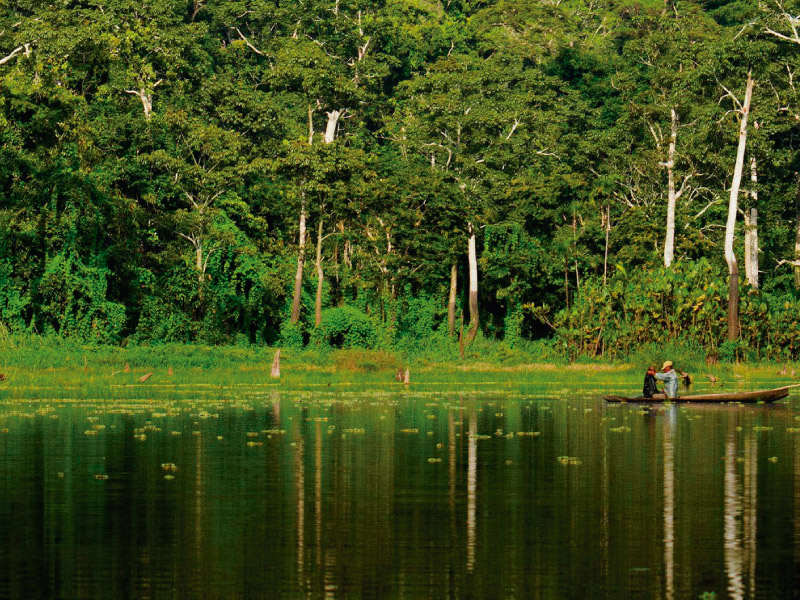Highlights of The Peruvian Amazon
Three quarters of Peru is in the jungle or Selva as it is known locally, which is divided into 2 parts, the high Peru jungle and the low Peru jungle. The high Peru jungle starts at the foot of the Andes and grows up the slopes of the mountains and the low Peru jungle is part of the largest jungle in the world and extends to nearly half of Brazil. The Peru Amazon River is the longest in South America with a biodiversity the richest of any river in the world, it is said that the river contains over two thousand five hundred species of fish, many different species of mammals, amphibians and snakes also live in the river. Along the shores of the mighty Peru Amazon many species of animals exist, some in danger of extinction, but luckily the governments of Peru and Brazil have been working together to protect the river and the jungle and have projects in place to protect the endangered species. Probably the most famous inhabitant of the Peru Amazon river is the Piranha, the funny fish with the bad reputation, but in fact the fish actually helps to keep the river clean.
Pacaya Samiria National Reserve in Peru
The Pacaya Samiria National Reserve is a huge protected area, situated in the Northeast of Peru. This forested area is distributed between the Loreto, Requena, High Amazon and Ucayali departments, and is circumscribed by two noteworthy streams: the Marañon and the Ucayali rivers. These two water streams are located in the Ucamara depression, giving the origin to the Amazon waterway. The Amazon river basin is the biggest rainforest on the planet and the Pacaya Samiria National Reserve is the biggest zone of protected flooded forest within the Amazon rainforest.
The Pacaya Samiria reserve is one of the biggest protected territories in Peru and was established in 1982. For comparison, it’s about the size of Slovenia, and around half the size of Denmark, Sweden or the Netherlands. It protects various segments of the western Amazon basin covering more than 2 million hectares of land. Quite a bit of it stays unexplored.
The name of the national reserve comes from two big rivers: The Pacaya River, a tributary of the Ucayali, that flows towards the left bank of the Puinahua channel. And The Samiria River, tributary of the Marañon, flows on the right side of this river.
History & Goals of Pacaya Samiria
In the early 80’s, the Pacaya Samiria National Reserve was established by the Peruvian government to preserve the vast wilderness, stunning biodiversity and pristine landscapes within this Amazonian area.
Pacaya Samiria National Reserve represents 1.5% of the nation’s land and 6% of Loreto’s department. The Pacaya Samiria National Reserve presently takes an incorporated administration, including indigenous people in management roles. This is a big change considering that before locals were excluded from the discussion.
The Pacaya Samiria National Reserve is part of the National System of Natural Areas and is secured and managed by the Peruvian Government, by the organization called Servicio Nacional de Áreas Naturales Protegidas (SERNANP). The main objective is to secure the biodiversity of the overflowed forest (known as varzea) in this region. As of late, the reserve’s objective has expanded to incorporate the promotion of sustainable development of indigenous people groups inside the national park.
In short, the Pacaya Samiria National Reserve is a paradise of plant and animal wildlife. It is an experience of discovery. Among its trees you will discover the immensity of the Amazon – the immensity of our planet.
Open your mind and heart; allow yourself this life-changing experience. Discover the true extent of our planet’s biodiversity. Few experiences in life are as inspiring as this.
Interesting in visiting Peruvian Amazon Jungle? Contact us today to speak to an expert travel planner.



